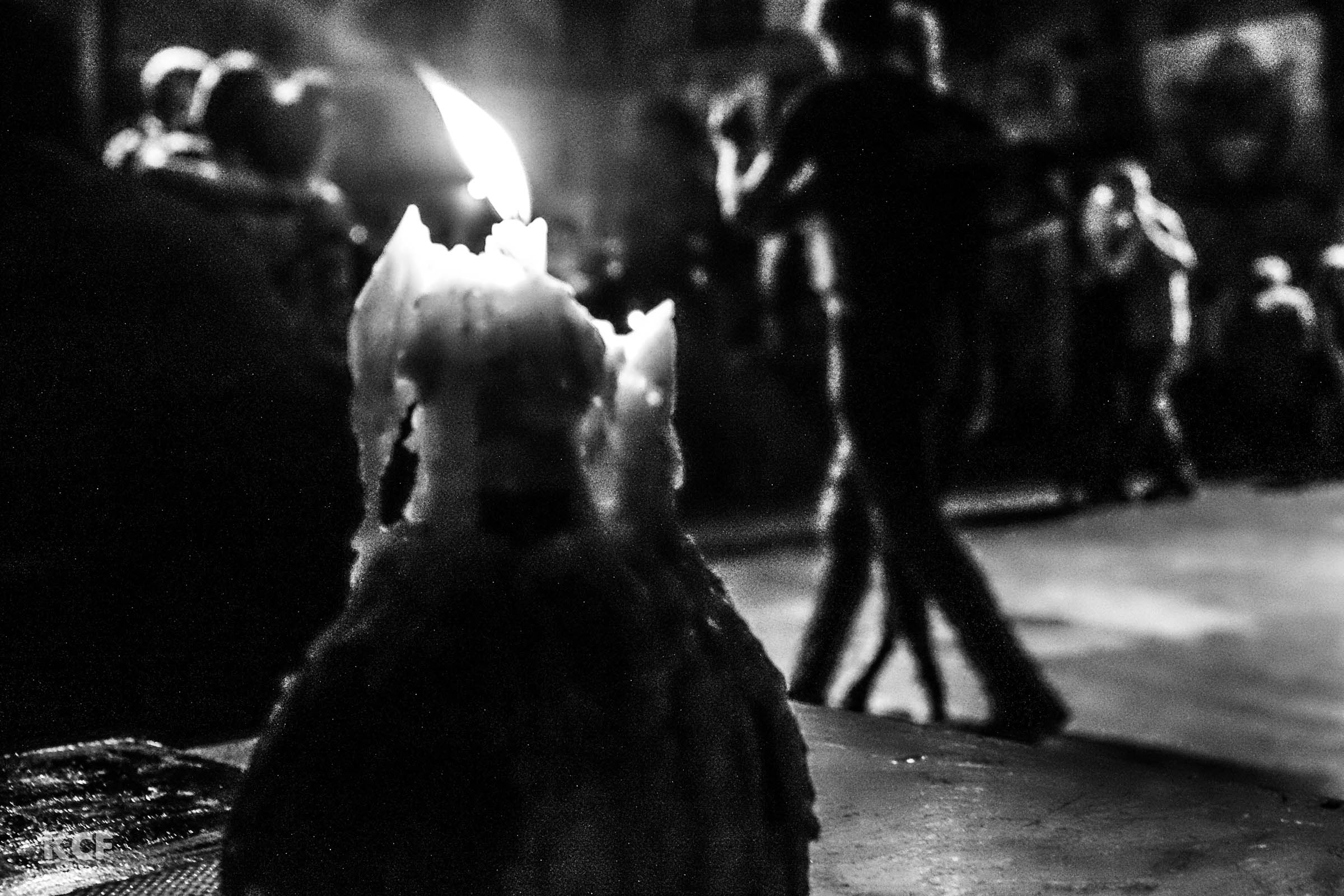
Dancers burning the candle at both ends, La Catedral, 2018.
Of late, I have been going to dance tango at the Marabú. It is a strange choice for me, that I can’t quite explain. I usually gravitate to venues with the relaxed good vibes of a community center rather than the places where the fancy dancers, young or old, congregate. I am, after all, still a laid-back Californian underneath. A little tango attitude is a good thing… but when it gets out of hand, I take refuge elsewhere.
Odd then that I would be drawn to a place like the Marabú, a once-great tango cabaret from the 1930s that bears the striations of the steam-roller of Argentine history. While Anibal Troilo and Carlos Di Sarli may have once performed here with their orchestras before men in black tie and irresistible women, the space is now a shell of it’s former self. One can imagine the excitement they felt back then descending the stairs from Maipú street into the underground club where anything was possible and tango history was being made. Today, you would be forgiven for confusing the entrance with one of those basement movie theaters in Buenos Aires where they play 24-hour back-to-back porn flicks for men who won’t meet your eye.
Inside there is a nice dance floor, a loud but crackly sound system, and lots of guys who seem out of place in 2020. The only decorations are some twinkly curtains of lights hung on the back walls. A love story that transpired here was the inspiration for one of the great tangos, Cómo Dos Extraños. But nowadays you’d have to wonder what those two lovers would be doing in a place like this.
If I find the Marabú fascinating, it is because of the men who come here, not the women. I struggle to place them in my known universe. Some certainly came of age in the time of disco, to judge by their gold chains and their black rayon shirts open to the navel. Others take their cues from the Golden Age of Tango, in their impeccably-tailored suits and their bon-vivant tans. All carry their chests inflated like some sort of puffed-rice cereal.
I have a friend from Canada who loves a milonga in deep La Boca, one even the locals are afraid to visit. It is held in the gym of a neighborhood sports club under fluorescent lights. She liked to go there because that was where the “bad boys” danced: tango creatures who lived outside the proper circuit and smelled still of arrabal and conventillo. “They had moves,” she said dreamily. She giggled when she spoke of them, as if remembering them made her ticklish.
Today tango has a veneer of glamour and cosmopolitanism. So it is interesting to look under the surface and see just how raw it remains at places like these. At the Marabú I catch a glimpse tango’s dark side.
In the milonga, there is an older man behind me in the line of dance. He has many years of tango in his body; I see it in the grace with which he moves, his feet never leaving the floor. And I see it in the face of the woman in his arms, her eyes closed, lost in tango bliss. Looking down at his feet, I notice his shoes. I realize I have never seen pin-striped shoes, did not know they could exist until this moment. When the couple bumps into us – because he is leading her in elaborate moves that don’t correspond to the crowded floor we are on – he gives me an ice-cold stare that does not apologize and seems a barely-veiled threat. Stay out of my way, his dead eyes say.
Part of me detests him and his pin-striped shoes even as another part admires him for his ruthlessness on the dance floor and, I suppose, in life. I wonder if men are born that way or if it is tango too deeply lived that takes you to that place.
I meet his eyes, staring back at him, and I wonder if at that moment my eyes are anywhere near as dead and menacing as his.

Leave a Reply